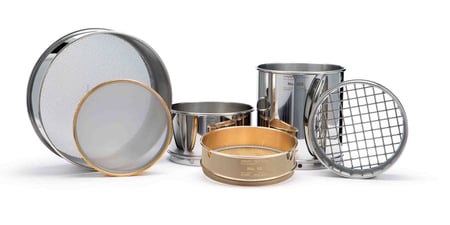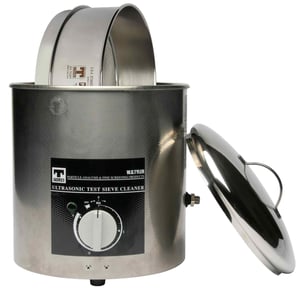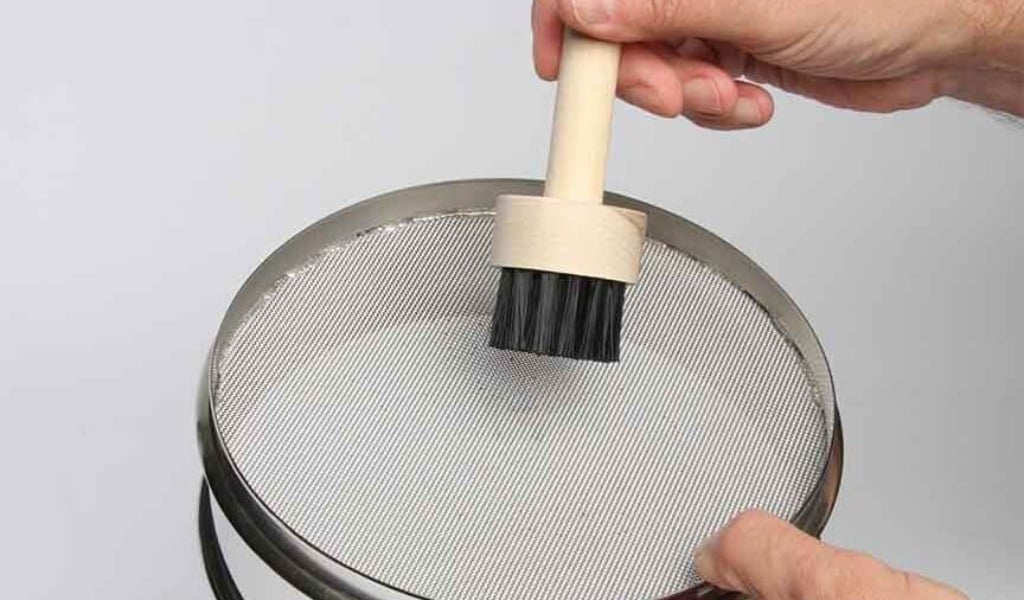How To Clean a Test Sieve? (Process and What To Look For)
Test sieves and test sieve analysis date back to the early 1800s. Despite remaining relatively the same throughout the years, it remains one of the most widely used particle analysis methods for a straightforward reason - accuracy.
But to preserve the accuracy of your sieves and sieve analysis results, there are several maintenance steps you must take regularly. Of these maintenance steps, cleaning your sieves between testing is of the utmost impotence.
This leaves the underlying question of how you should be cleaning your test sieves.
As founders of the original test sieve analysis standards, W.S. Tyler wants to help you develop trust in your test sieve analysis process. This means helping you better maintain your equipment, so your lab works in conjunction to yield accurate and reputable results for years to come.
And with that, we wrote the following article to highlight the dos and don'ts associated with cleaning your test sieves. It will cover:
- How you can tell your test sieves need to be cleaned
- What can happen if you neglect to clean your test sieves
- How to properly clean your test sieves
- What not to do when cleaning your test sieves
What Are Key Indicators Your Test Sieve Needs To Be Cleaned?

The easiest way to identify the need to clean your sieves is through visual inspection. Over time you may notice the mesh openings are blocked off by a buildup of sample material.
This is particularly true when working with near-sized particles and particles that are considered water soluble.
If you can't physically see material buildup throughout your test sieves, especially when working with finer mesh sieves, you will begin to see anomalies in your sieve analysis results. More specifically, you will find that the sieves in your stack that need to be cleaned will produce higher retention percentages than average.
What Are the Consequences of Not Cleaning Your Test Sieves Regularly?
The biggest concern of not implementing a regular cleaning routine is accuracy. When sample material builds up over time, the openings become smaller, skewing their accuracy.
To that end, you should keep in mind that the longer you allow the material to accumulate within the mesh openings, the harder it will be to remove unwanted material. Additionally, while not very common, prolonged material accumulation can cause corrosion.
What Is the Proper Way Lab Technicians Should Be Cleaning Their Test Sieves?
When working with larger openings, you tend to have finer particles adhere to the mesh. The best way to clean test sieves with larger openings is by using the following steps:
- Turn the sieve over and position it over a pan to collect dislodged particles
- Using a test sieve cleaning brush, brush the underside of the mesh in a circular motion.
- After brushing, tap the side of the sieve frame lightly with the brush handle to clear particles on the inside of the frame
- Rinse the sieve in a warm water, mild detergent solution
- Dry your sieves by either letting them air dry or by applying a manageable amount of heat via an autoclave
Now, if you are using finer mesh counts in your test sieves, it is recommended that you use an ultrasonic cleaner with a mild detergent. This will ensure the particles that are hard to reach with brushing alone are removed.

For the best result, it is recommended that you use a soft bristle brush following the steps above after ultrasonically cleaning your fine mesh sieves.
What Are Common Mistakes Lab Technicians Make When Cleaning Their Test Sieves?
One of the most widely seen mistakes when cleaning test sieves is lab technicians using an object to poke at the mesh to release lodged particles. What is often seen are objects that are much bigger than the mesh opening used.
As a result, the mesh is either torn, or the mesh openings are stretched to a larger size.
It is also common for lab technicians to apply too much force when brushing their sieves. Excessive brushing force can actually loosen the mesh from the frames and, with finer mesh counts, tear the mesh.
Keep Your Test Sieves Pristine With Proper Storage
Cleaning your test sieves is an integral practice needed to prevent stubborn material build and skewed results. This involves using a suitable brush to dislodge plugged practice as well as an ultrasonic cleaner when working with finer mesh counts.
But cleaning your mesh is just one of many steps you should take to preserve the accuracy of your sieves. You should also take the steps needed to ensure they are stored in a safe location until your next round of testing.
W.S. Tyler created the first test sieve analysis standards over a century ago and has since developed the know-how needed to help build your confidence in how you test your sample material.
To learn the ins and outs of properly storing your test sieve, read the following article:
About Ronnie Brown
Ronnie is the Content Writer for W.S. Tyler and has four years of experience as a professional writer. He strives to expand his knowledge on all things particle analysis and woven wire mesh to leverage his exceptional writing and graphic design skills, creating a one-of-a-kind experience for customers.



